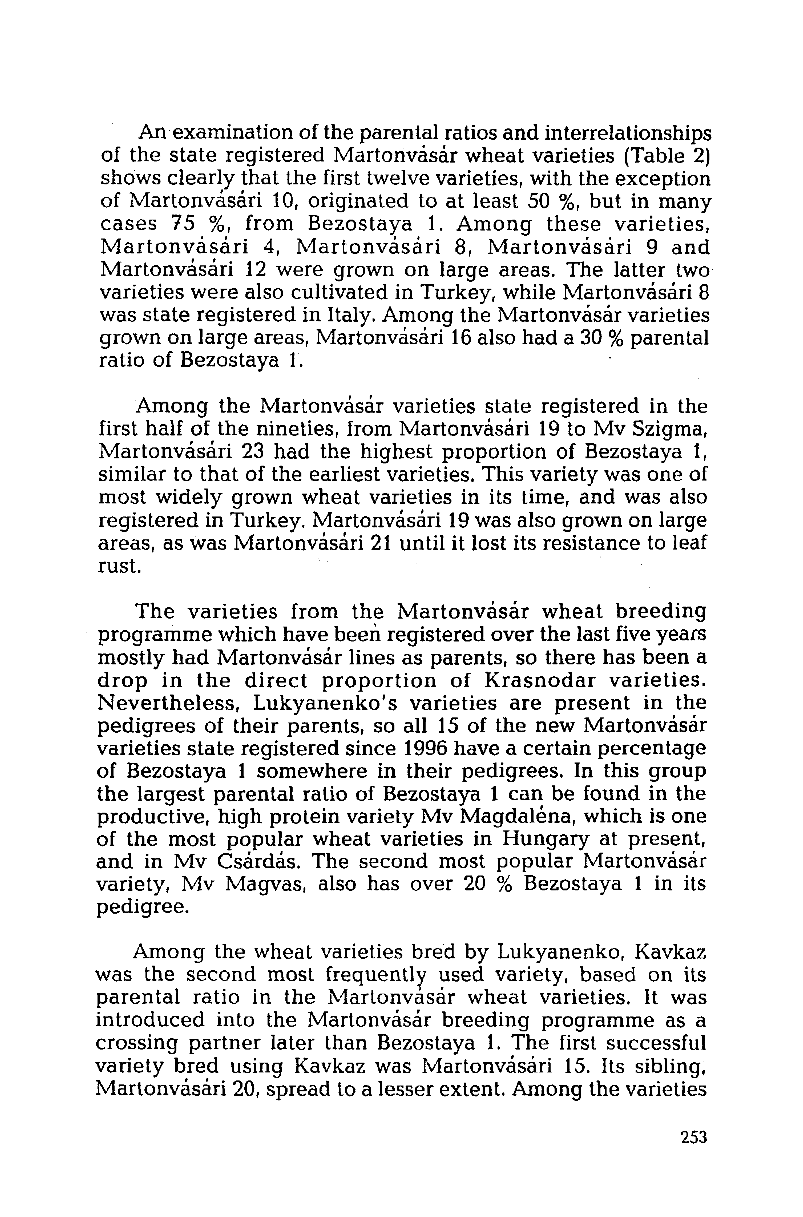

An examination of the parental ratios and interrelationships
of the state registered Martonvasar wheat varieties (Table
2
)
shows clearly that the first twelve varieties, with the exception
of Martonvasari 10, originated to at least 50 %, but in many
cases 75 %, from Bezostaya 1. Among these varieties,
Martonvasari 4, Martonvasari
8
, Martonvasari 9 and
Martonvasari 12 were grown on large areas. The latter two
varieties were also cultivated in Turkey, while Martonvasari
8
was state registered in Italy. Among the Martonvasar varieties
grown on large areas, Martonvasari 16 also had a 30 %parental
ratio of Bezostaya
1
.
Among the Martonvasar varieties state registered in the
first half of the nineties, from Martonvasari 19 to Mv Szigma,
Martonvasari 23 had the highest proportion of Bezostaya 1,
similar to that of the earliest varieties. This variety was one of
most widely grown wheat varieties in its time, and was also
registered in Turkey. Martonvasari 19 was also grown on large
areas, as was Martonvasari 21 until it lost its resistance to leaf
rust.
The varieties from the Martonvasar wheat breeding
programme which have been registered over the last five years
mostly had Martonvasar lines as parents, so there has been a
drop in the direct proportion of Krasnodar varieties.
Nevertheless, Lukyanenko's varieties are present in the
pedigrees of their parents, so all 15 of the new Martonvasar
varieties state registered since 1996 have a certain percentage
of Bezostaya 1 somewhere in their pedigrees. In this group
the largest parental ratio of Bezostaya 1 can be found in the
productive, high protein variety Mv Magdalena, which is one
of the most popular wheat varieties in Hungary at present,
and in Mv Csardas. The second most popular Martonvasar
variety, Mv Magvas, also has over 20 % Bezostaya 1 in its
pedigree.
Among the wheat varieties bred by Lukyanenko, Kavkaz
was the second most frequently used variety, based on its
parental ratio in the Martonvasar wheat varieties. It was
introduced into the Martonvasar breeding programme as a
crossing partner later than Bezostaya 1. The first successful
variety bred using Kavkaz was Martonvasari 15. Its sibling,
Martonvasari 20, spread to a lesser extent. Among the varieties
253
Научная электронная библиотека ЦНСХБ









